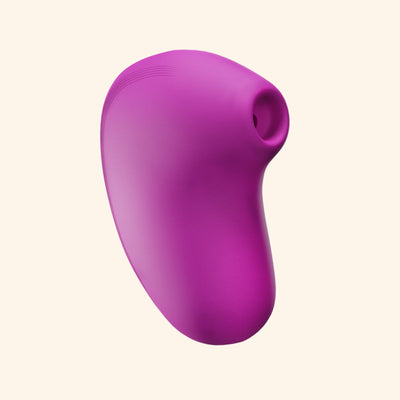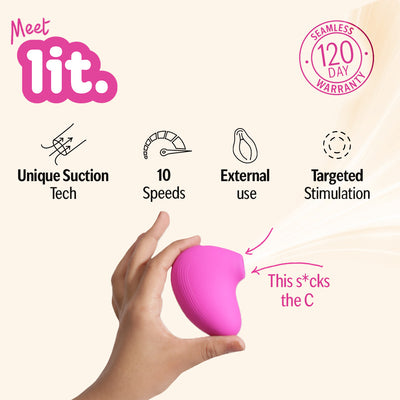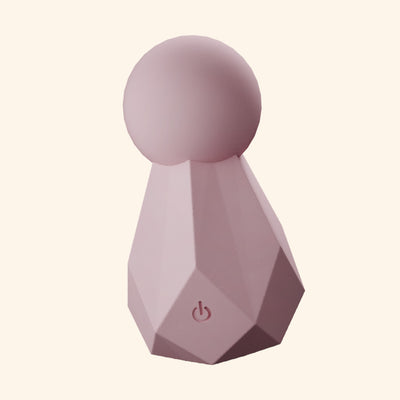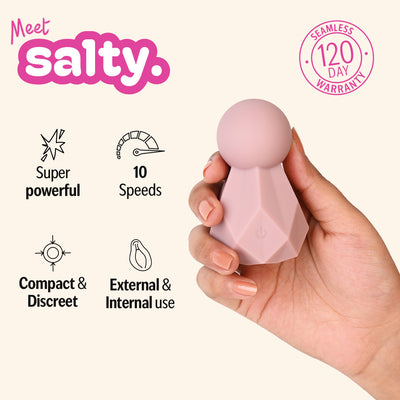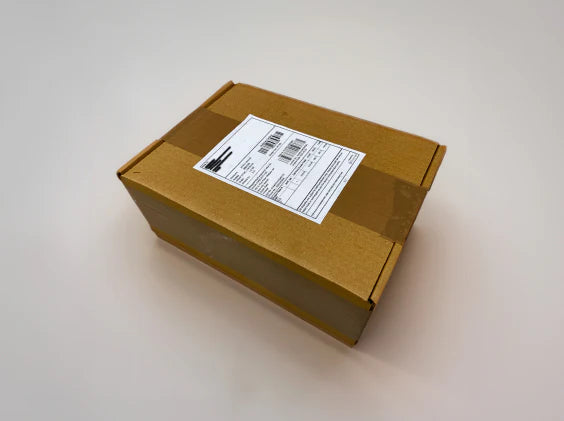Your cart is currently empty

With expert insights from Dr. Esha Chainani and Apurupa
In 21st-century conversations about pleasure for people with vulvas, you can expect to hear someone bring up “ringing the doorbell” or “flicking the bean” in reference to playing with the clitoris. And while it’s taken too long for us to talk about engaging with this erogenous organ whose sole purpose is pleasure, we’ve barely scratched the surface.
Because the clitoris is so much more than a “happy button”. In fact, the image of the clitoris that most of us are familiar with is just 10% of it! So, if you’ve been finding it a little tricky to deal with the sensitivity of your clitoris, or that of your partner(s), it’s very understandable.
But as always, Aunt Sassy’s got your back and in this guide, we’ll be delving into how you can explore the sensitivity of your clit safely and pleasurably (just like how our self care products have been devised to be!)
Getting Cliterate
So much about the pleasure of people with vulvas is unknown because so much about our bodies is unknown. And the clitoris is probably the most misunderstood body part of all. It was only in 1998, that we discovered its full wishbone structure.
 Researchers who have dedicated their work to understanding the clitoris, have spoken about how it’s been ignored in medical science for centuries because of the general culture of shame around female sensuality.
Researchers who have dedicated their work to understanding the clitoris, have spoken about how it’s been ignored in medical science for centuries because of the general culture of shame around female sensuality.
The hyperfixation on the reproductive function of genitals also shapes school curricula that fail to discuss the clitoris, which has no reproductive function in humans and almost all other mammals, and has been associated with immense shame because of its sole existence for pleasure.
Luckily for us, Aunt Sassy’s all about shamelessness, and the first step to being shameless is knowing yourself. So let’s go over some clit facts to help us get a better idea about it:
- Around 90% of the clitoris lies beneath the surface that we see, much like an iceberg. The part that we see forms the head or the glans of the clitoris, and is surrounded by the clitoral hood.
- The clitoris is made up of 18 parts–a mix of erectile tissue, muscle and nerves. All of the parts beneath the surface are made of erectile tissue, which swells with blood when you’re turned on.
- The size of the full clitoris ranges from 7-12 cm in length, and swells by 50 to 300% when you have a lady boner.
- The clitoris likes to get in on all the action, and is entangled with all of the pelvic structures around it, including the urethra, the vagina, and the labia. This means that the orgasms that you experience anywhere in the vulva often involve clitoral stimulation. Although the G-spot is often spoken about as a separate entity, it is just the engorged bulbs of an aroused clitoris that are felt through the vaginal wall. Beyond the first 1 - 1.5 inches, the vaginal canal has almost no sensation at all.
- An 80-year-old clit looks and works the same as a 20-year-old one–but it grows in size as you age.
Tender to the Touch
Understanding the anatomy of the clitoris also helps get a better grasp of why it is so sensitive. According to studies, it has about more than 10, 000 nerves (researchers are still counting how many), making it the most sensitive organ in the human body.
All these nerves work to communicate to the brain when you’re "in the mood". The nerves are also all bundled together, which can cause hypersensitivity in some people.
So the next time you’re feeling some discomfort during playtime with the clitoral glans (the visible itty bit), it might be because boo is literally getting on your nerves!

Hypersensitivity of the clitoral glans isn't a medical condition, and while it can cause discomfort and even pain, it can be compared to sensitivity in other erogenous zones of the body like glans, or the head of the penis, and the nipples–although the clitoris is still structured to experience the most sensitivity.
But sensitivity of the clitoris also doesn’t mean that you shouldn’t have fun with it–after all, it’s designed for pleasure. Rather, you should be attentive to how you touch it. Our five-star rated suction massager LIT, with its five different vibe options, has been carefully innovated to cosy up to the clitoris.

While the clitoris is a sensitive organ, the sensitivity differs from person to person, and is influenced by factors like age, hormones, and even clothing.
It is also possible to experience temporary numbness of the clitoris due to hypersensitivity, particularly after play–the sensation comes back within a few minutes to hours and there is no reason for concern.
Rubbing It the Right Way
It can be puzzling when you know the clitoris is reserved for gratification, but you’re not sure how to go about it. Here are some ways to smoothen the experience:
- Take your time to understand what type of pressure and how much works for you. Whether it’s with yourself and your left hand or with a partner, take it slow so you can pay attention to what you’re feeling. Here's a video by Karishma Swarup – who's a pleasure educator recognised popularly by her Instagram handle, @talkyounevergot and one of our Sassy masterclass facilitators – running us through the various ways you can try touching your clit.
In the video, you can spot the OG, which, like the LIT, is another personal massager, and comes with 10 different vibe modes for all kinds of touch. It can also be used internally so you can pleasure your wonderful wishbone via the G-spot.
Dr. Esha Chainani, an obstetrician and gynaecologist practising at Surya Hospitals, Mumbai, and founder of Premaa, an app to empower pregnant women, busts the myth about pleasure toys decreasing clitoral sensitivity:
“Sex toys, including vibrating ones, do not change clitoral sensitivity. The “dead vagina syndrome” (a sense of numbness caused by vibe overuse) is not a medical term, and it is completely untrue. You can use toys as much as you’d like to. And there are benefits to using sex toys, like being able to reach orgasms more easily, and reduced pain. Sometimes it may cause temporary numbness, but that feeling usually goes away within a day (as your body resets and recovers), as with any kind of intense stimulation, and would not cause any permanent harm.”
- Try waiting for yourself to become aroused and wet before you come in direct contact with the clitoral glans. As you become more aroused, your sensitivity threshold can increase, making it a more suitable time to play with the lovebud.
- If playing with the clitoral glans during arousal isn’t all that pleasurable either, you can try stimulating the other parts of the clitoris. After all, there’s so much more of it! Sweet spots like the G-spot, the vagina, and even anal penetration (since the clitoris extends to the anus as well) could trigger some powerful orgasms, while ensuring that you’re comfortable and not feeling hypersensitivity. Dividing focus between the clitoral hood and another sweet spot, and trying for blended orgasms could be intensely satisfying too!
- Loading up on the lube based on how much wetness you enjoy, can aid with sensitivity by reducing friction and adding a more comfortable sensation. If you haven’t gotten your hands on our DTF: water based lube, what are you waiting for? It’s going to amp up your games in the bedroom by adding next level smoothness!
- Not going commando and leaving your panties on, or using a dental dam, could be another way to minimise sensitivity with indirect touch.
- Ensuring that you’re communicating with your partner(s) about how you like for them to touch you, what feels good, and how much.
Getting Professional Help
While clitoral sensitivity isn’t a concern that demands medical attention, and can be managed by adjusting techniques of stimulation, Dr. Esha explains:
“If the sensitivity is disrupting your intimate experiences, you can see your gynaecologist, who should be able to look closer into your concerns. Clitoral sensitivity is not documented medically, as compared to clitoral pain (clitorodynia) and so it might be more difficult to access medical care if one needs it. “ She also goes on to differentiate between clitoral hypersensitivity and clitorodynia. “Experiencing hypersensitivity of the clitoris is not the same as clitorodynia, which is a medical condition where you feel pain in the clitoral region without any direct stimulation to your clitoris and usually requires medical treatment.“
Being aware of this distinction can help you be aware of what kind of medical attention you might require. However, further study of the clitoris is required to ensure both well-informed pleasure and medical practices, which include improving conditions for experiences of orgasm among people with vulvas, for surgery that otherwise may cause harm to the clitoris, and gender affirmative procedures.

So go on, spend some quality time with your favourite clitoris–whether that’s your own or your partner’s, and discover the wonder of this organ as the rest of the world does too. Own it, babe. Your clit deserves it and so do you!
About the Author:

Anna (she/they) is queer and neurodivergent. They have always been curious about pleasure and conversations around it (and wanted to found a condom company when they were 12, because of Global North misinformed panic that the climate crisis is a consequence of overpopulation–they’ve learnt better now). They wish to contribute to a world where everyone can enjoy access to pleasure, safely and shamelessly.

